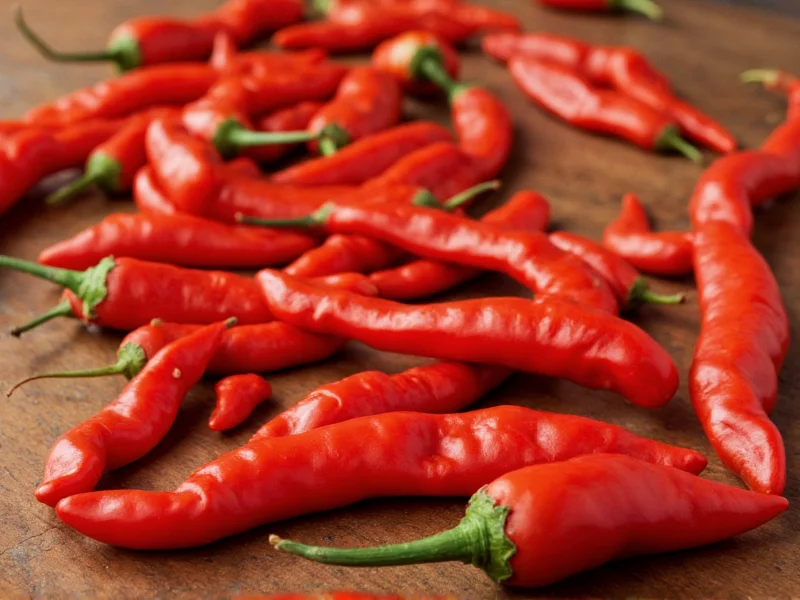When your chili turns out hotter than expected, you need practical solutions that preserve flavor while reducing heat. Understanding the science behind spiciness helps you choose the most effective remedy for your specific situation. Capsaicin, the compound in chili peppers responsible for heat, is oil-soluble and binds to pain receptors in your mouth. The right fix depends on your chili's ingredients, cooking stage, and available pantry items.
Why Chili Gets Too Spicy: The Science Simplified
Capsaicin dissolves in fats and oils but not in water, which explains why drinking water doesn't help with spicy food. When making chili, heat intensity increases as capsaicin releases during cooking. Factors that contribute to overly spicy chili include:
- Using hotter pepper varieties than intended
- Accidentally including pepper seeds or membranes (where most capsaicin concentrates)
- Overestimating spice measurements
- Longer cooking times that intensify heat
Effective Methods to Fix Overly Spicy Chili
Dairy-Based Solutions
Dairy products contain casein, a protein that breaks capsaicin's bond with pain receptors. This is why how to reduce spiciness in chili without changing flavor often starts with dairy options:
- Sour cream or yogurt: Stir in 2-4 tablespoons per serving just before serving
- Cheese: Add shredded cheddar or queso fresco which melts into the chili
- Milk or cream: Use 1/4 cup increments while simmering (avoid boiling after adding)
Sweet Neutralizers
Sugar molecules compete with capsaicin for receptor sites. The right amount of sweetness balances heat without making your chili taste sugary:
- Granulated sugar: Add 1 teaspoon at a time while simmering
- Honey or maple syrup: 1/2 teaspoon increments for complex flavor
- Tomato paste: Adds natural sweetness while deepening flavor
- Shredded carrots: Simmer 1/4 cup to release natural sugars
Dilution Techniques
When you need quick fixes for overly spicy chili recipe problems, dilution is your most reliable approach:
| Ingredient | Amount to Add | Flavor Impact |
|---|---|---|
| Beans (kidney, pinto) | 1 cup per 4 servings | Minimal flavor change |
| Tomato sauce | 1/2 cup per 4 servings | Enhances tomato base |
| Broth or stock | 1/2 cup per 4 servings | Dilutes all flavors slightly |
| Corn | 1/2 cup per 4 servings | Adds sweetness |
Acidic Balancers
Acids change how we perceive heat. When exploring what to add to chili that's too hot, consider these options:
- Lime or lemon juice: 1 tablespoon at a time (citric acid disrupts capsaicin)
- Vinegar: Apple cider vinegar adds complexity (1 teaspoon increments)
- Tomatoes: Canned diced tomatoes add acidity and volume
Advanced Techniques for Serious Heat Issues
The Simmering Solution
For how to balance flavors in spicy chili that's still cooking, extend simmer time with added ingredients. Simmering for 20-30 minutes after adding dairy or sweet elements allows flavors to integrate properly. Stir occasionally and taste every 10 minutes.
Temperature Matters
Capsaicin sensitivity decreases as food cools. If you've added fixatives but it's still too hot, let the chili rest off-heat for 15-20 minutes before serving. The perceived heat will diminish as it cools.
What NOT to Do When Fixing Spicy Chili
Avoid these common mistakes when addressing fixing chili that's too spicy with common ingredients:
- Adding more heat: Don't try to "balance" with more ingredients - this compounds the problem
- Using water: Water spreads capsaicin rather than neutralizing it
- Over-sweetening: Adding too much sugar creates an unbalanced flavor profile
- Adding fixatives at the end: Incorporate solutions during cooking for better integration
Preventing Overly Spicy Chili in Future Batches
The best solution is prevention. When developing your chili recipe:
- Start with half the recommended spice amount and build gradually
- Remove seeds and membranes from fresh peppers (they contain most capsaicin)
- Toast dried spices briefly before adding to release flavors without excessive heat
- Keep a "fix kit" nearby while cooking: dairy, sugar, and acid sources
- Label homemade spice blends with heat levels
When All Else Fails: Creative Solutions
If your chili remains too spicy despite corrections:
- Repurpose as a spicy sauce for tacos or nachos
- Use as a base for soups where additional ingredients will dilute heat
- Freeze portions for future use in smaller quantities as a heat booster











 浙公网安备
33010002000092号
浙公网安备
33010002000092号 浙B2-20120091-4
浙B2-20120091-4